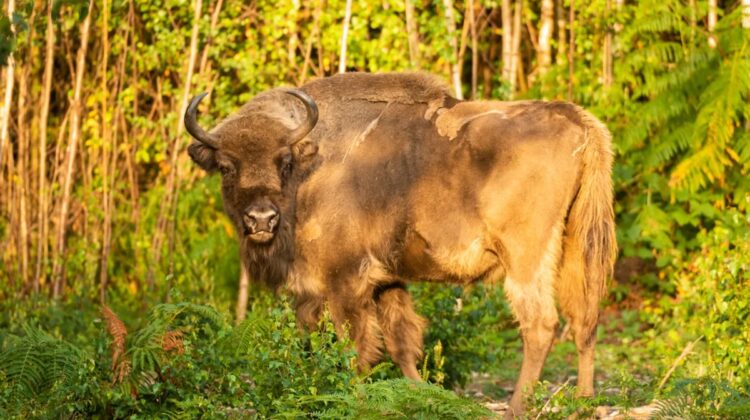
Three European Bison (Bison bonasus) may be able to reverse the fact that the UK is one of the most environmentally devastated nations in the world. As the first of these creatures to walk freely in the wild in Britain for thousands of years, the three made history this week.
As part of The Wilder Blean Project, run by the Kent Wildlife Trust and the Wildwood Trust, these gentle giants are settling down in the rural areas of Kent. This is a rewilding experiment to investigate how much the bison can improve the local ecosystem and, ideally, provide numerous advantages to other species that live nearby.
By moving through the forests, the quadrupeds are functioning as “ecosystem engineers,” altering the ecology of the surrounding area. They will make larger areas of light-filled bare ground visible due to their size, natural activities, and feeding preferences. This will encourage the growth of plants and insects, which will benefit species of birds, bats, and even lizards.
Due to the modifications to the woods, the bison will also contribute to the development of a landscape that is more tolerant to climate change. This is timely given that the UK is still experiencing a heatwave with temperatures that have surpassed 40°C (104°F) for the first time.
According to The Guardian, the bison have come from two different wildlife parks: an elderly matriarch from Highland wildlife park in Scotland and two young females from Fota wildlife park in Cork, Ireland. A bull from Germany, whose arrival was postponed by Brexit import issues, is anticipated to join them in August.
“We hope that Wilder Blean will usher in a new age of conservation in the UK. According to Evan Bowen-Jones, Chief Executive Officer of Kent Wildlife Trust, “we need to revolutionize the way we restore natural landscapes, depending less on human intervention and more on natural engineers like bison, boar, and beaver.”
The team has equipped the three females with tracking collars so they can follow their activities and determine which plants they are engaging with most. As they travel through the vegetation, these fluffy bulldozers will scatter seeds of various plants, aiding in seed dissemination. They now have a 5 hectare (12 acre) gated territory to enjoy, but when the male comes, this will grow tenfold to 50 hectares (123 acres), according to The Guardian. The bison may be seen to visitors to Blean Woods as they become accustomed to their new surroundings.
The greatest bulls of the European bison, which are the largest wild land mammals in Europe, may weigh up to 1,000 kilograms (2,205 pounds). It is believed that these females, who are anticipated to live for between 18 and 24 years, will eventually reproduce and give birth to one calf a year.
If the experiment is successful, the bison may be distributed among other parts of Britain, according to the licence for the location, which allows it to house ten animals.
After the population was nearly wiped out in the early 20th century owing to hunting and habitat destruction, all European bison are derived from just 12 founder animals.
Other grazing species like Exmoor ponies, Iron Age pigs, and Longhorn cattle will eventually join the bison, and their natural behaviors will operate similarly to the bison’s, improving the environment without the need for human intervention.
The People’s Postcode Lottery raised the $1.125 million needed to support the project.
[H/T: The Guardian]

Leave a Reply